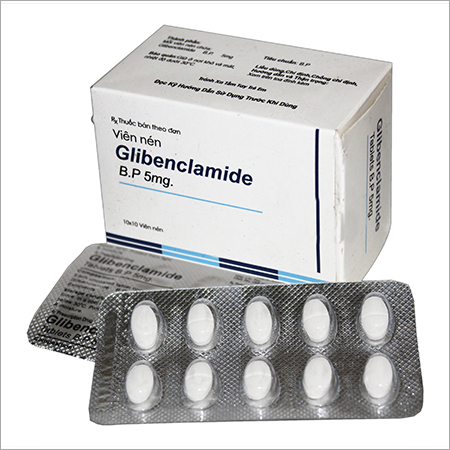
Glibenclamide, also known as glyburide, is an antidiabetic drug in a class of medications known as sulfonylureas, closely related to sulfonamide antibiotics. More
Glibenclamide, also known as glyburide, is an antidiabetic drug in a class of medications known as sulfonylureas, closely related to sulfonamide antibiotics.
Glibenclamide
Glyburide; Glibenclamide; Glybenclamide; Diabeta
Afdiex, Aviglen, Betanase, C-Mide, Codica, D-Con, Daonil, Diabetnil, Diolin, Euglucon, G-Nil, GLCO, Glibet, Glinil, Gluconil, Glucosafe, Glyboral, Glybovin, Semi Codica, Semi Daonil, Semi- Euglucon, Semi-Glyboral, Sugnl
5-chloro-N-[2-(4-{[(cyclohexylcarbamoyl)amino]sulfonyl}phenyl)ethyl]-2-methoxybenzamide
Oral absorption with hepatic metabolism.
Glyburide, a second-generation sulfonylurea antidiabetic agent, lowers blood glucose acutely by stimulating the release of insulin from the pancreas, an effect dependent upon functioning beta cells in the pancreatic islets.
Initially, 2.5-5 mg daily may increase wkly by increments of 2.5 mg daily, up to 15 mg daily.
Indicated as an adjunct to diet to lower the blood glucose in patients with NIDDM whose hyperglycemia cannot be satisfactorily controlled by diet alone.
Hypoglycaemia; cholestatic jaundice; agranulocytosis; aplastic anaemia; haemolytic anaemia. Blood dyscrasias (reversible), liver dysfunction, hypoglycaemia, GI symptoms, and allergic skin reactions.
Severe or life-threatening hyperglycaemia, severe liver or renal failure, type 1 diabetes, diabetic ketoacidosis with or without coma, patients with severe infection or trauma.
Store at 15-30°C.
494.004
C23H28ClN3O5S
10238-21-8